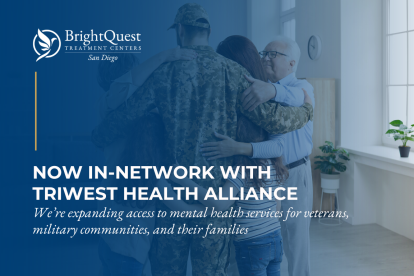
Understanding Mental Illness
Understanding mental illness can be challenging. Mental illness is often misunderstood and causes both fears and denial when it happens to our loved ones or ourselves. Nobody chooses to be sick, as nobody chooses to be mentally unwell. Becoming educated about mental illness and mental disorders often reduces the anxieties and stigmas that surround it. Families are often unprepared and can feel helpless. Individuals diagnosed with an illness often feel judged and can feel they are treated as pariahs of the community, which is one of the reasons that the stigma of mental illness continues to be in the shadows of society and not brought out to light.
The difference between the terms mental illness and mental disorders are slight.
A mental disorder refers to a disturbance in a person that affects the body or mind (or both) through the evolution of thought towards this disturbance of the mind. They are often perceived to be situational, short-term occurring, and not as severe as a reoccurring or a constant disruptive disease which affects functioning on one’s own, as defines mental illness.
Despite the differences, the stigma of mental health can be helped greatly by understanding mental illness, the stigma associated with it, and how treatment can help.
What Happens When Mental Illness Goes Untreated?
In cities and towns around the country we all experience what happens when mental illness goes untreated. When families and friends aren’t prepared to handle the changes that affect their loved one, the end result is often isolation—and in many cases, homelessness. Suicide rates are high, crime rates rise, and substance abuse plays a part due to trying self-medicate when prescription drugs aren’t available.
Jails and institutions become over-crowded, and many people return back on the streets to fend for themselves without proper care.
US veterans, both active and non-active duty, often having mental disorders of acute stress, PTSD, traumatic brain injury, depression, and substance abuse issues, die from suicide at an average of 20 times a day according to a recent report by the Veterans Administration.
Families, friends, and even communities have trouble understanding mental illness. Despite the millions of individuals in the United States alone struggling with mental health disorders, the stigma of mental illness remains a challenge.
Mental Illness Statistics
There are approximately 54 million reported cases in the US regarding mental illness and disorders annually. There are nearly 328 million people who live in the nation currently. If you estimate that there are a few to several more million cases that go unreported, the percentage of annual mental health issues is about 1 out of 6 or 1 out of 5 people.
Statistically, many people have had a mental disorder in their lifetime or know someone who has. Sometimes we have situational disorders and other times an illness or disorder can pervade our entire life. For example, someone may be diagnosed with acute stress disorder having experienced a natural disaster while another may have a drug-induced psychotic episode and have permanent behavior changes.
The good news is that more than ever before, we know more about brain functioning and believe that most mental illnesses are treatable.
Types of Mental Illness
There are several hundred classifications and severities of each type of mental disorder. Symptoms may occur gradually or rapidly, as some are triggered by events. Symptoms may include mood swings, isolation, personality changes, unexplained phobias, change in personal habits, odd or different behavior, changes in speech patterns, and physical issues.
Some common disorders and illnesses include:
- Acute Stress Disorder and Post-Traumatic Stress Disorder (PTSD)
- Agoraphobia
- Eating Disorders
- Attention Deficit Disorder (ADD)
- Bipolar Disorder (I and II) and Cyclothymic Disorder
- Borderline Personality Disorder
- Narcissistic Personality Disorder
- Dissociative Identity Disorder
- Depression (including Major Depressive Disorder, Persistent Depressive Depression, and Dysthymic Disorder)
- Generalized Anxiety Disorder (GAD)
- Obsessive-Compulsive Disorder (OCD)
- Panic Disorder
- Phobias
Call For a Confidential Phone Assessment.
619-466-0547How Treatment Can Help Mental Illness
Catching the warning signs and becoming prepared for changes in the family dynamic is imperative. Getting treatment early shows the best results.
Therapy
Therapy can be helpful for people diagnosed with a mental health disorder and for supportive members, and also for understanding mental illness. Mental health professionals will be able to suggest treatment options for the illness, and referrals if necessary.
Therapy often provides a safe place for the family to discuss openly their fears surrounding the illness and can become educated on how to be supportive.
Individuals can often find ways to change behavior through different therapy techniques.
Mental health problems can manifest into emotional and physical issues as well. It is best to find a therapist who understands and specializes in the particular imbalances that are presented. Many people seeking therapy find that by learning coping skills, they can lead productive lives.
Treatment Centers
What happens when a loved one needs more than counseling but should not be institutionalized?
Fortunately, there are privately owned treatment facilities like BrightQuest that concentrate on helping people with mental disorders. This is often in a safe, residential setting with a professional staff who regularly monitor the clients.
Mental health and dual diagnosis (mental health plus addiction) facilities are equipped with professionals who can monitor each individual and suggest a treatment plan with the goal of returning the client to a functional and stable life without the constant care of another.






